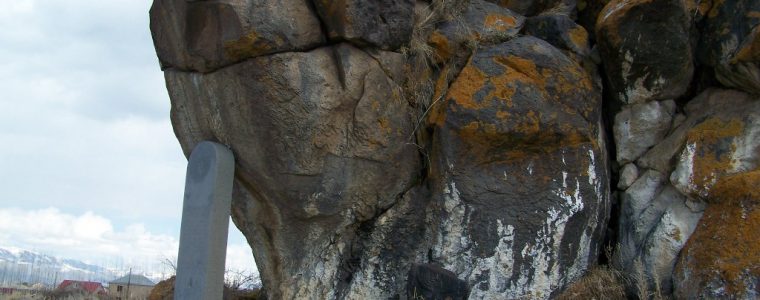
Location, structure and history: The site is built on a rocky hill facing Lake Sevan in the North, and is situated at about 1.5km West of the village of Tsovinar, in the Eastern part of the village. It is easily accessible through the village by the old road leading to the village of Artsvanist.
At the south-west part of the fort immediately left of the Tsovinar- Artsvanist road at the frontal part of a rock there is a Cuneiform left by the King Rusah I of the Kingdom of Van (735-713 BC).
According records Rusah I invaded the fort, re-constructed it at the same place and called it Teyshebaini Fort. It can be clearly seen that certain elements making up the strengthening constructions (towers, walls etc.) are reconstructed or have additional constructions made of cob bricks. The walls and stone blocks
of the fort and especially the citadel are also reconstructed; the frontal parts are made of ashlars, with smooth external sides. Actually, Teyshebaini is the best preserved fort of the Kingdom of Van period in the Sevan watershed. It has been the most reliable bastion of the Urartu Period on the South bank of Lake Sevan, like the “City of Khaldi” for Uyeliqukhi Kingdom or Berdi Glukh Fort of Gavar for the watershed of the river Gavaraget.